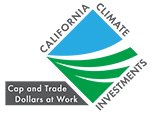Wildfire Prevention and Preparation Campaign
- Public Policy
- Sustainable Development

In the Spring of 2022, ArtCenter partnered with the California Department of Forestry and Fire Protection (CAL FIRE) and the American Red Cross Pacific Division, to host an interdisciplinary Designmatters studio. The studio challenged ArtCenter students to learn about the specific dangers of wildfires in California and to create a compelling statewide multi-modal campaign that encourages residents to take direct preventable action. Through digital research across a variety of platforms and media, the campaign had generous input from a variety of experts in the fields of science, disaster planning and firefighting.
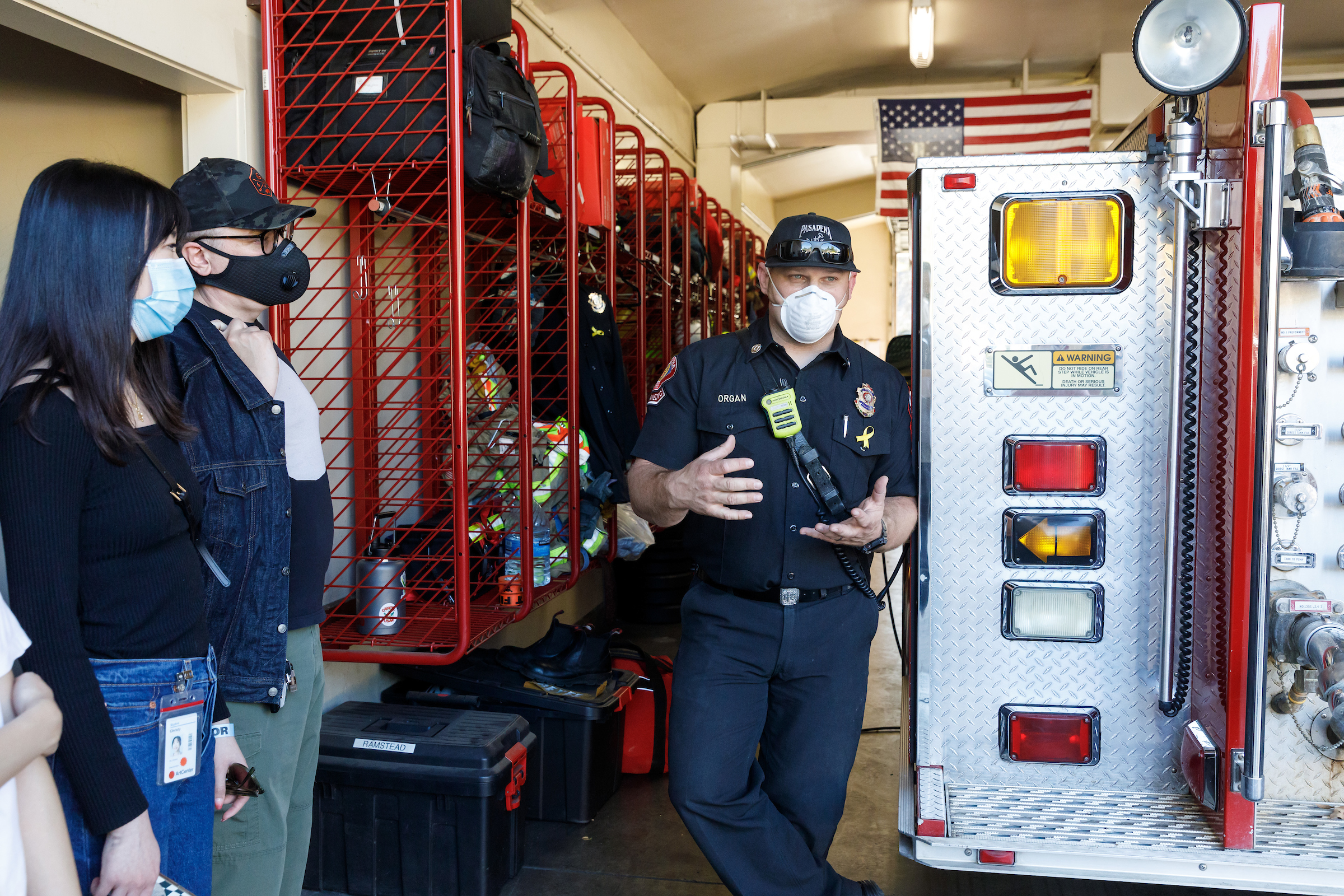
“Culture takes a long time to change; it doesn’t happen overnight. With organizations that have existed for a long time, cultures are very entrenched. That can be a good thing – or it can be hindrance or a challenge when you have to pivot quickly in the face of rapid change. What this studio has done with this campaign is the start of showing people the Art of the Possible: how we can work to change the culture, how we can empower more people, how we can create a sense of community, belonging and a partnership.”
Luke Beckman, Division Disaster Director, California State Relations, American Red Cross Pacific Division
Project Brief
As of November 8, 2021, over 3 million acres in California have been burned due to 8300+ fires, destroying wide swaths of nature, homes and infrastructure. The number and severity of wildfires are rising year over year, driven by causes like climate change, drought, high levels of dry fuel and human error. Californians can take action to lower the risk of wildfires, and to protect their homes and communities.
In this Graphic Design and Designmatters hosted transdisciplinary studio, students created visually compelling animated videos, motion graphics and campaign materials to raise awareness of severe wildfire risks and call all residents to take steps in their homes and communities to prevent and prepare for wildfires. Students worked with the American Red Cross and experts in the field, including Dr. Lucy Jones, a nationally recognized expert on disaster risk reduction and David Shew, an expert on wildfires in California, to learn about the causes and impacts of wildfires and understand the evidence-based steps individuals and communities can take to lower the risks of wildfires starting and destroying property. This project is funded by a grant from CAL Fire, and the strongest campaign concepts from the studio will be rolled out across California through ArtCenter, the Red Cross and a network of partners.
About Wildfires in California
Wildfires have been a natural part of the California landscape for centuries; however, recent record-breaking destructive and deadly fires have put the state on a continual high alert fire season. As of November 8, 2021, more than 3 million acres in California have been burned because of 8,300+ fires.
According to CAL FIRE, climate change is considered a key driver of these mega-blazes that have decimated communities, claimed numerous lives and continue to contribute to an ecological unbalance with a loss of trees/plants and wildlife.
Warmer spring and summer temperatures, a reduced snowpack and an earlier spring snowmelt creates long and more intense dry seasons – making forests more susceptible to severe wildfires.

“We made a lot of decisions and took a lot of steps to shape our message into something digestible. During our first session with the partners, everything they showed us from a design perspective was very text heavy and a little dense. So we had to shape many of the printed items, with text we used that was light in order to get the message across quickly.”
Ana Vazquez, student (Graphic Design)
Research and Project Development
To introduce students to the realities of wildfires in California, partners from CAL FIRE and the Red Cross gave a kick-off presentation that outlined the nature of wildfires, the history of managing the land in California and today’s prevention/protection strategies.
Students learned that overall, fire has been part of the natural history of California, a necessity that encourages new growth. From the 1960s onward, the focus has been on how to coexist with wildfire, especially in light of climate change and other factors. Experts and officials realize that the public cannot solely rely on local fire departments to solve the problem of increased fire dangers– the public needs to play a part in the solution.
Through discussions with students in a lively Q and A session, a tone was set for the campaign – avoid the use of scare tactics and focus a design message that is encouraging and will motivate the target audience of homeowners living in areas with a high risk of wildfires. Additionally, the needs of vulnerable populations need to be considered, especially those with low incomes, older adults, non-English speakers, and others.
Students were introduced to a wealth of online resources available to homeowners who want information on how best to “fortify” their homes, yards and communities against wildfires. Homeowners need to assess their surroundings objectively to discover their specific fire risk and how to address those potential problem elements. Videos were shared that described personal stories of fire loss and the human side of the aftermath of fire.
The experts brainstormed with the students about campaign elements: it needs to lead with positive reinforcements, involve storytelling and encourage a change of how wildfire protection can represent a cultural shift of attitude. How can gamification be incorporated into the design? Can a campaign get people to embrace change and see problems with a different attitude? How can tapping into the mystique of California help lay the foundation for such a campaign?
The campaign needs to feel fresh with nontraditional ideas but still guide homeowners with practical resources. “How can we make ‘being safe’ cool?” remarked one expert summing up the design work ahead of the students.
Working as one team, the students conducted research to examine what makes for a successful (as well as unsuccessful) multi-disciplinary campaign, especially ones that are sponsored by governmental agencies. In particular they examined the successful “Dumb Ways to Die” campaign from Australia that promoted safety around crossing railroad tracks. They dug into what would motivate their target audience which they determined to be Baby Boomer and Generation X homeowners.
To help students understand how best to use elements of storytelling to communicate science facts, Dr. Lucy Jones visited the class and led an energizing conversation with many examples. A longtime seismologist and public voice for earthquake science, Dr. Jones founded the Dr. Lucy Jones Center for Science and Society in 2016 to help facilitate the use of science to create more resilient communities.

Additionally, students toured a local fire station and met with firefighters to understand the culture and mentality of those in fire service. Students had the opportunity to ask questions about fire safety and how homeowners can play a role in keeping their homes and community safe.
In preparing for midterm presentation, students divided up various aspects of the campaign, but continued to brainstorm over-arching strategic concepts as well as specific details.
Further examination into their target audience group – Baby Boomers and Generation X homeowners – students decided to fashion a campaign that would appeal to the audience’s sense of nostalgia, as the first generations of California Cool with a psychedelic, hippie vibe. Riffing on the concept of iconic Laurel Canyon musicians in the 60s, students wondered how writing and producing a song – a memorable jingle – could amplify their message in catchy toe-tapping beats.
From their research, students determined that often traditional agency language can be confusing and off-putting to homeowners. The phrase “Defensible Space” is an important concept that describes the necessary physical distance around homes that should be clear of brush to keep structures fire safe. Students decided to re-brand the phrase as “Buffer Zone” which presents a friendlier and more inviting descriptive which is also less militaristic and harsh.
Students created graphics sketches, illustrations and even digital animations to show what a Buffer Zone would look like, making the brush clearance task appealing and easy for homeowners to accomplish.
Delving into the psychology of motivation, students opted to appeal to the residential pride of being a Californian. Students wanted to add a reward component to the campaign to encourage active participation, an item that would feed into this collective and individual sense of pride. Different items were considered: badges, pins, patches, etc.
These strategies were folded into the campaign’s sensibilities that would be lighthearted, fun and engaging as it tapped into iconic California culture motif and mood.

Midterm Presentation
With partners in attendance, students shared their strategy, concept and designs, outlining the thinking behind their choices and the decision that this campaign will ‘not be boring,’ and would appeal to a homeowner’s sense of pride.
Students reiterated the challenge and how it informed their overall messaging approach. They explained the elements of a successful, memorable campaign and how they will be incorporating those aspects into this campaign.
To appeal to their target audience, an original song was written and recorded by Alexandra Hope; a solo female singer on guitar with English and Spanish lyrics. The song would be the backdrop for the visual animation short/PSA. Character design and animation was shared as well as a bilingual website that would feature fire safety resources and information on a reward system.
Partners shared their enthusiasm for the project, offering constructive criticisms and suggestions for expanding and honing specific elements. All agreed that appealing to pride and presenting a campaign that is fun – instead of fear-inducing – is desirable on many different levels. Students were motivated to refine individual components and add others to create a robust campaign.
After midterm, students focused their attention on creating a fully fleshed out animated message to accompany the original song. Backgrounds and character designs were created. The specifics of how the reward system would work were ironed out along with final design concepts. Finally, the website, social media posts and ancillary materials were flushed out to make them visually connected to the larger campaign.
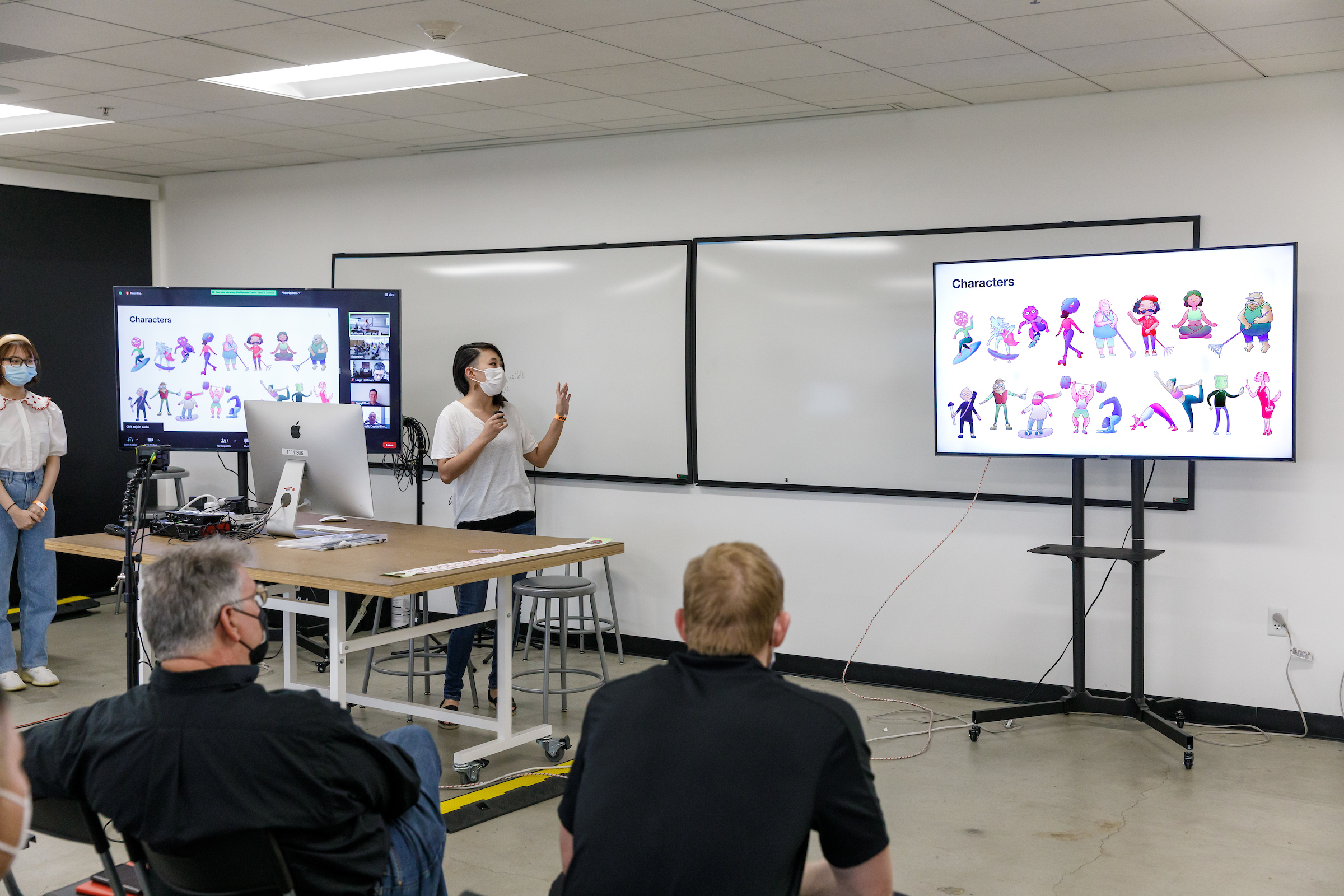
“This is my goal for the students, to understand this: Blasting through resistance. Resistance from outside, resistance from inside and connecting with creative freedom, to say, ‘Yes, this is a serious project but I am bringing 100 percent creativity to it, to create something real fresh while everybody is telling me that it’s not possible to do.’”
Guillaume Wolf , instructor
Outcomes
 close
close
Animated Song
Read more
An upbeat original song was composed and recorded by Alexandra Hope; the feel of the song is 1960s California style. The lyrics encourage Californians from all walks of life to “get together” and stop wildfires. The simple animation is dominated by diverse “California” quirky characters: odd-shaped, odd-sized, animal-like and humanoid. Fitness buffs, skateboarders, artists, etc. frolic in backgrounds are colorful and happy. Typography is handmade with vibrating letters. The concept of the Buffer Zone is illustrated effectively.
Three customizable intros can be used on social media to capture attention for the viewer to then watch the animated song. These forms of “pattern interrupt” feature a woodpecker cracking the “third window,” a talking cactus with multiple arms, and an owl with flowing garments.
The song/message/video ends by inviting viewers to visit a website for more information on how to become a California Protector.
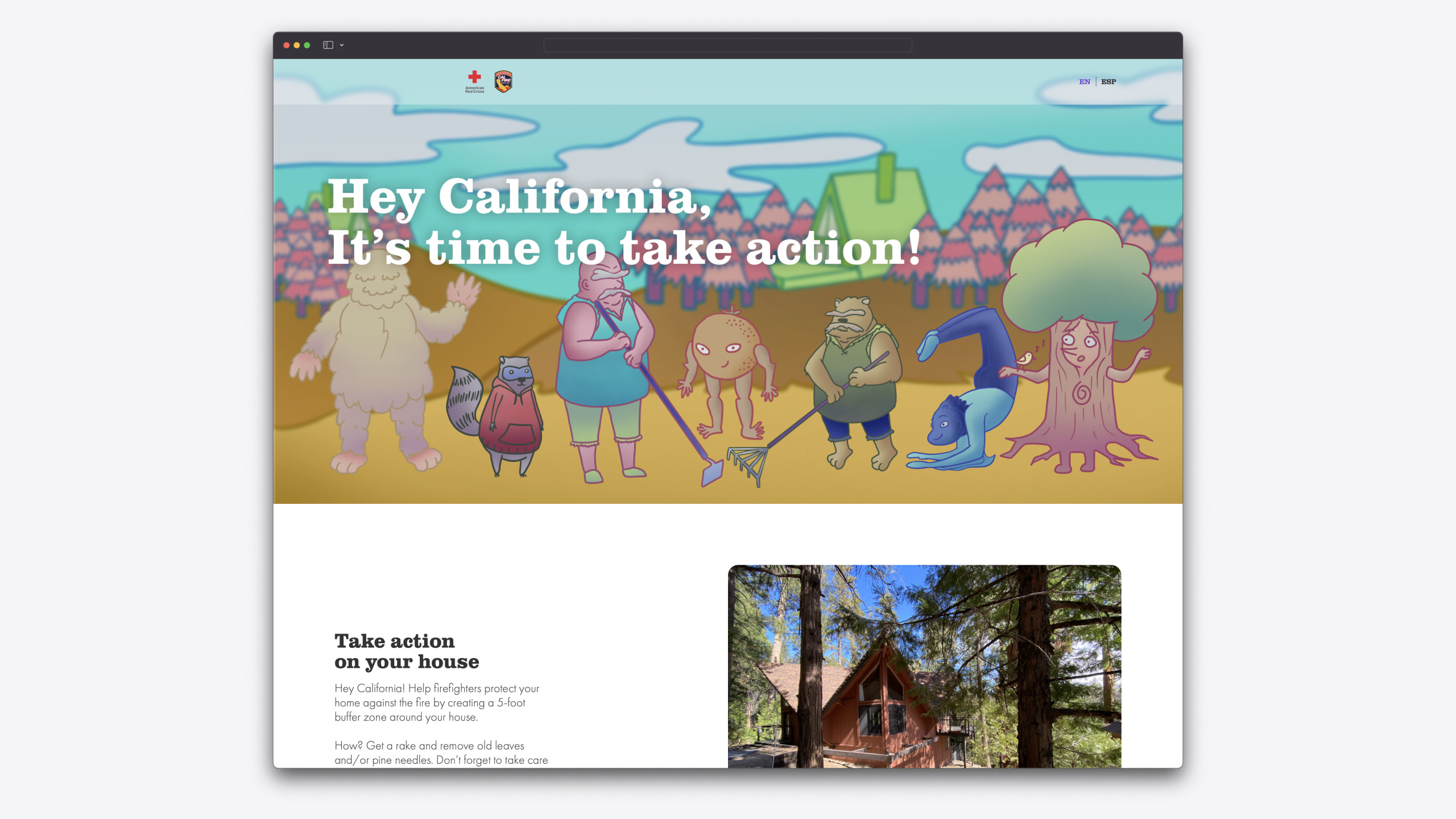 close
close
Website – Badge of Honor
Read more
Homeowners who want to become a California Protectors will upload a photo of their yard before and after brush clearance; in return, they will receive a patch announcing them as a California Protector. The patch combines elements of firefighting logos with the California bear of the state flag. The patch can be worn on a hat or a jacket or displayed in other ways.
The website will be multilingual and will point visitors to additional resources on preparing their homes for wildfire season. Website elements will be optimized for easy reading on mobile phones.
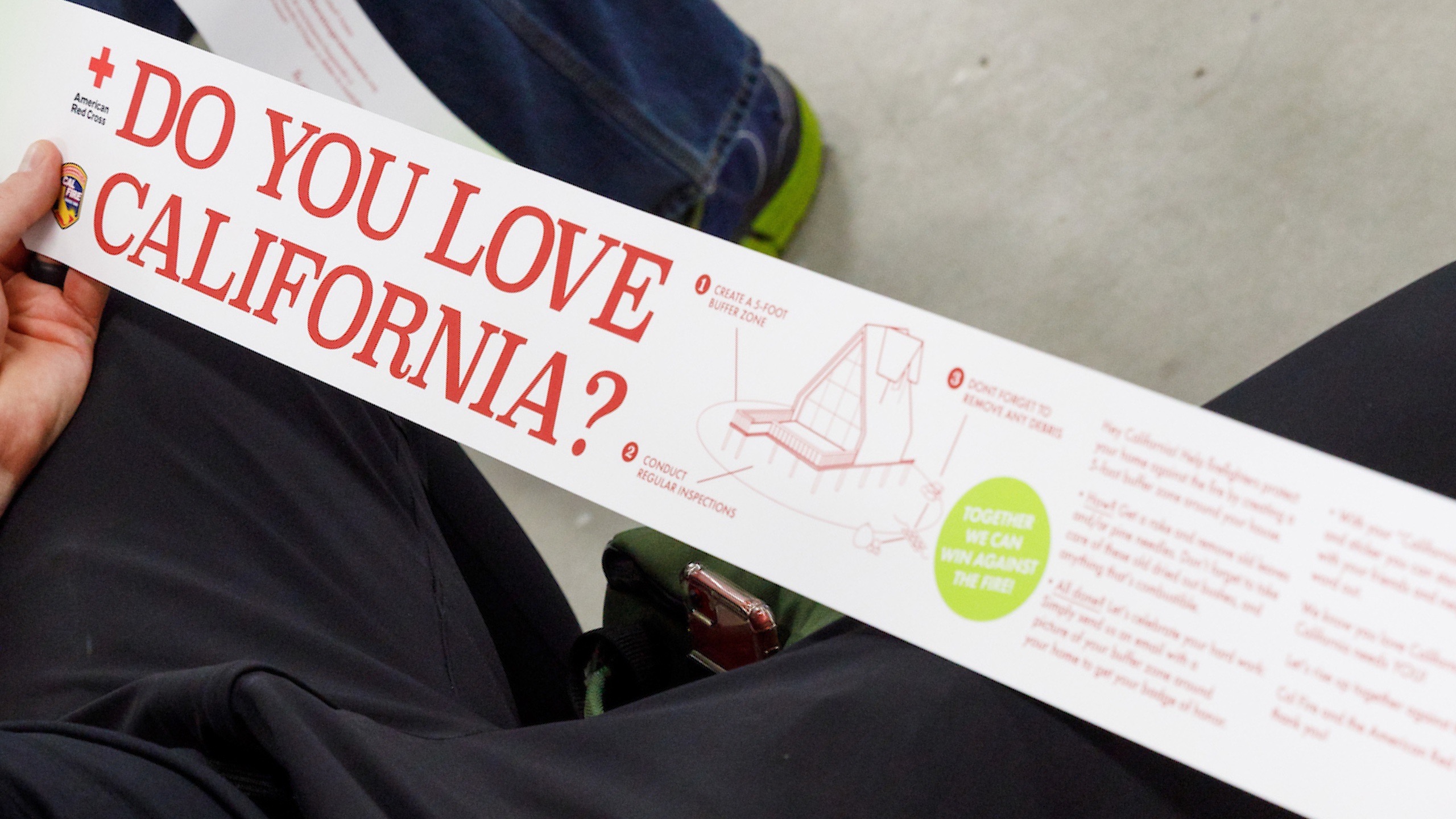 close
close
Print projects
Read more
An advertising door hanger can be created to place on targeted homes. Unlike short hangers which are easily ignored, these door hangers are three times as long. Their unusual shape and opening question, “Do you love California?” invites engagement. Simple short text and a line drawing depict the Buffer Zone.
Next steps
A small group of students will work over the summer to continue to refine the campaign and produce the assets, under the direction of faculty Judy Toretti. The campaign is scheduled to be rolled out across California through ArtCenter, the American Red Cross and a network of partners over Fall 2022 and Spring 2023.
————————-
Funding for this project provided by the California Department of Forestry and Fire Protection’s Fire Prevention Program as part of the California Climate Investments Program.
CALIFORNIA WILDFIRE PREVENTION CAMPAIGN, is part of California Climate Investments, a statewide program that puts billions of Cap-and-Trade dollars to work reducing GHG emissions, strengthening the economy, and improving public health and the environment– particularly in disadvantaged communities. The Cap-and-Trade program also creates a financial incentive for industries to invest in clean technologies and develop innovative ways to reduce pollution. California Climate Investments projects include affordable housing, renewable energy, public transportation, zero-emission vehicles, environmental restoration, more sustainable agriculture, recycling, and much more. At least 35 percent of these investments are located within and benefiting residents of disadvantaged communities, low-income communities, and low-income households across California. For more information, visit the California Climate Investments website at: www.caclimateinvestments.ca.gov.


